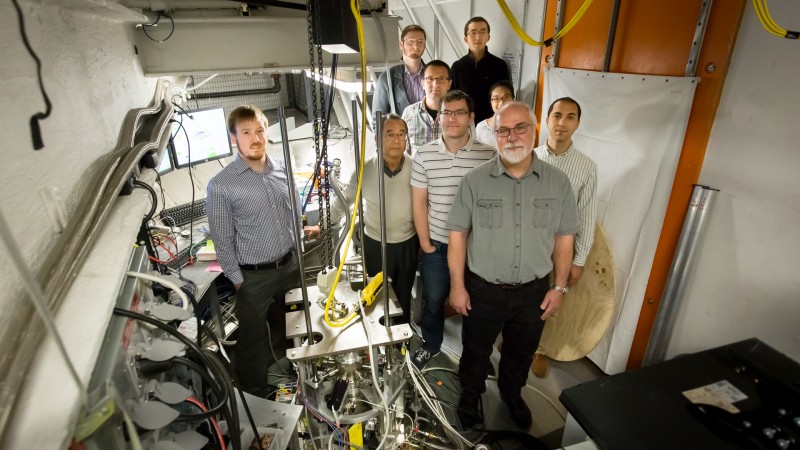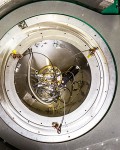With liquid everywhere around us, it’s surprising to learn how little is really understood about the fundamental properties of liquids, like viscosity, at the atomic level. For a group of researchers working at Oak Ridge National Laboratory’s Spallation Neutron Source, using neutrons to study the atomic dynamics of liquid metals is key to unlocking the mystery of the atomistic origin of viscosity.
“The physics of solids have been fully developed for crystals,” said Takeshi Egami, the Principal Investigator for this experiment from the University of Tennessee - Knoxville. “But liquids don’t have the advantage of atomic order, or periodicity, so we have to get creative to study their atomic structure and dynamics.”
One problem with studying liquids, he explains, is that the container often gets in the way of the measurements. The team is using a specially developed device, the Neutron Electrostatic Levitator, to levitate or float the metal sample while hitting it with a laser to melt it into a liquid. They are making neutron scattering measurements of this sample on ARCS, SNS beam line 18. The NESL is an on-going collaboration between ORNL and Washington University.
“It actually grew out of our preliminary work for our NASA International Space Station experiment,” said Ken Kelton from Washington University in St. Louis. “The early levitator experiments were designed for ground-based solidification studies; we evolved those into synchrotron-based structural studies. These early experiments inspired our development of a levitator that could be used for neutron scattering measurements.”
A key advantage of levitation is to enable super-cooling, or decreasing the temperature of the liquid below the melting temperature without crystallizing it. Their pre-experiment computer simulations predicted the behavior of liquids at high temperatures, but more importantly, they predict unique behavior when the metal is supercooled.
With these measurements at ARCS, the team hopes to develop a new theory of fundamental atomic interactions in liquid metal inspired by their computer simulations.
“This is a new field of research,” said Egami. “We’re excited to be on the frontier.”





